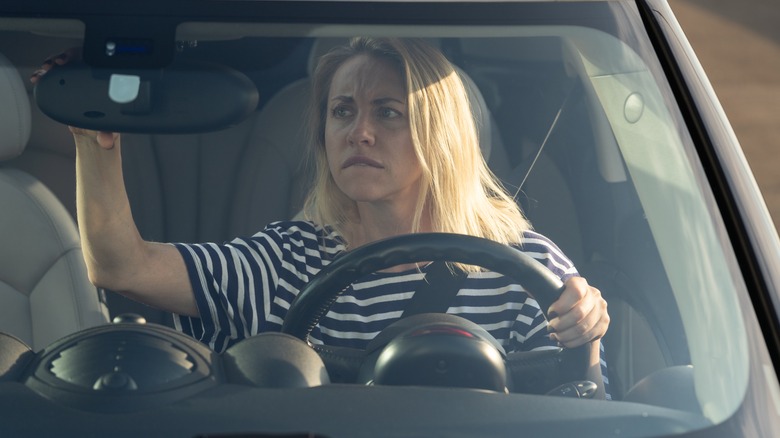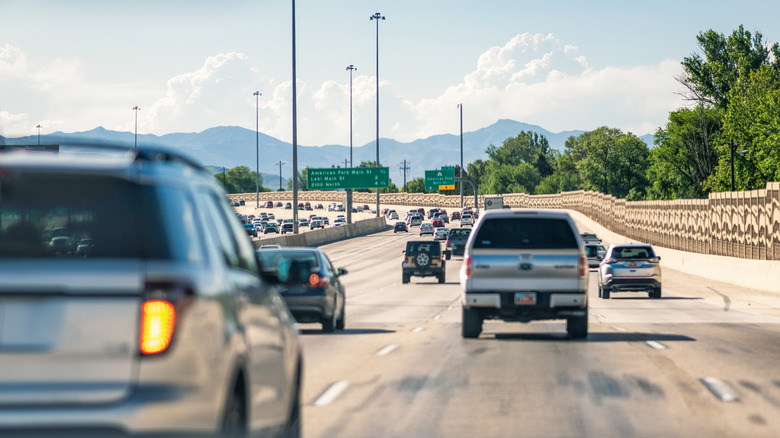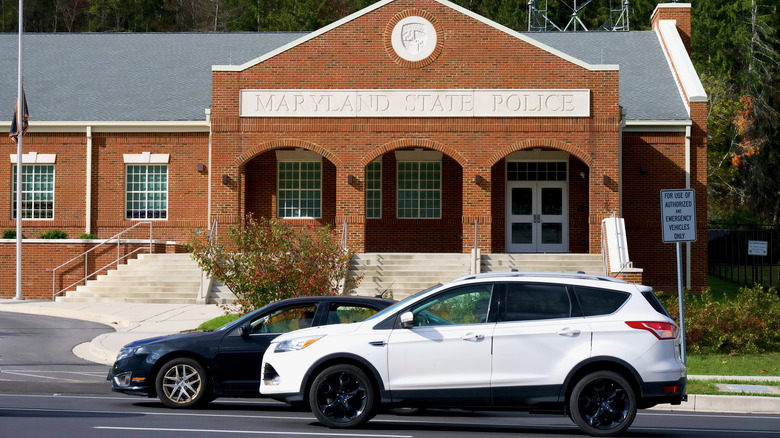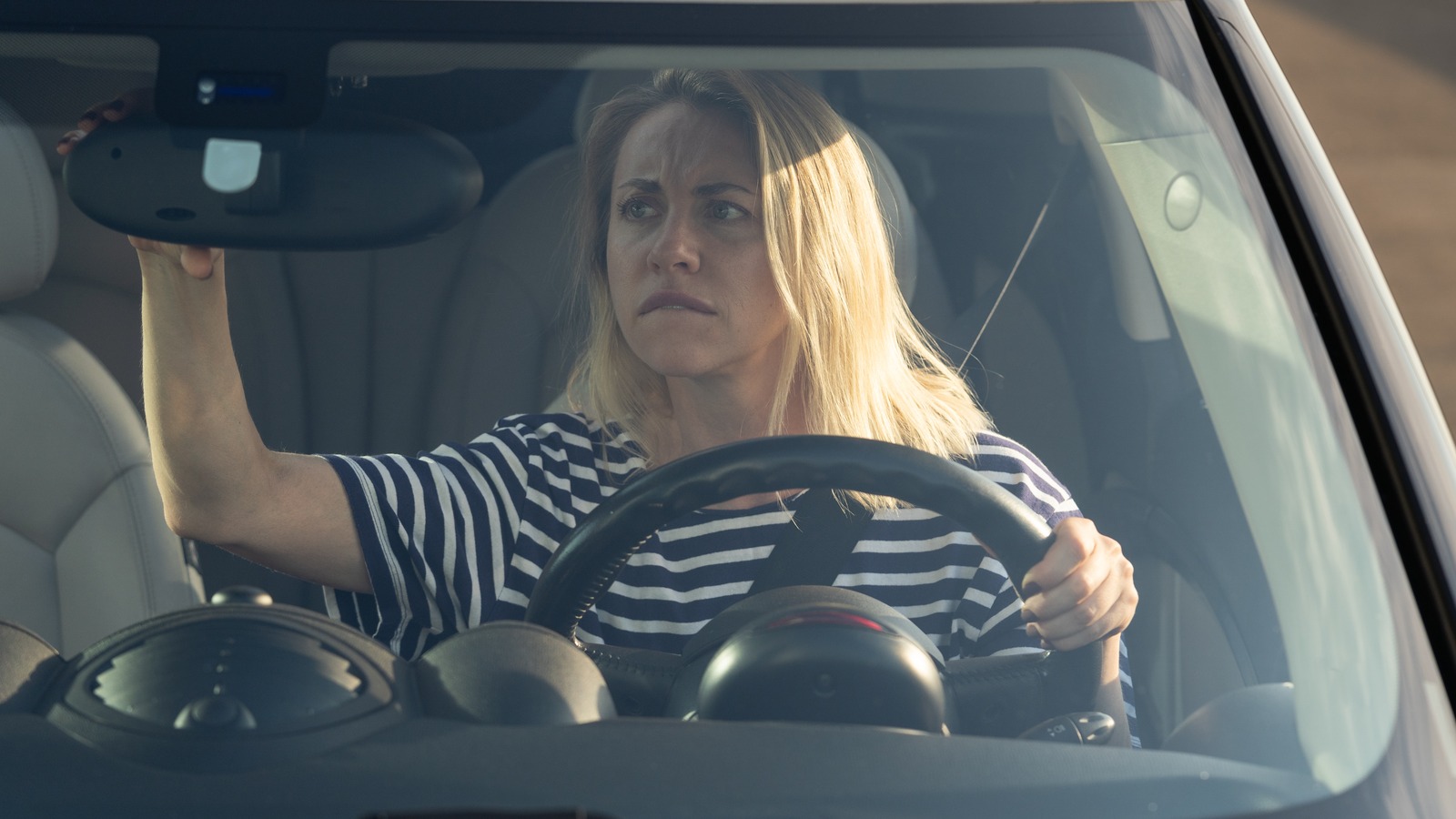 DimaBerlin/Shutterstock
DimaBerlin/Shutterstock
Odds are, you've seen it before in movies or TV shows: a character is driving and notices something in their rearview mirror. They're being followed, and they need to ditch their pursuer. This inevitably leads to several chaotic driving maneuvers, going down a flight of stairs, flying at top speed through an ever-tightening alleyway, or just slamming the pedal to the floor and fleeing as fast as the car can drive. While these efforts look great on screen, they're sensationalized for entertainment.
Should you ever notice that you are being followed by a car, don't recall your favorite car chase because experts have real-world advice for what to do. First and foremost, you need to remain calm so your driving doesn't appear erratic. Under no circumstances should you continue home, as you'd lead your pursuers straight there. You'll want to make some turns to try to throw them off your scent before ultimately driving to a safe location. This could be a fire department, a police station, or a busy shopping center.
This will help keep you safe while you alert the authorities and throw off your would-be pursuers. Believe it or not, this kind of thing does happen, and it's usually tied to robberies. In October 2025, thieves followed a Tesla, which is a vehicle that tends to stand out, from a San Fernando Valley bank, broke into the car, and stole $3,000 in cash that had just been withdrawn. Fortunately, the driver had parked and wasn't inside the car when the theft occurred, but it could have been much worse.
How to know you're being followed
 Georgeclerk/Getty Images
Georgeclerk/Getty Images
We've all looked in the rearview mirror and recognized a car that's been behind us for a long time. It happens so often that most people don't even register it, but you're going to see familiar cars behind you. That doesn't mean that you're being followed, so it's important to understand how you can tell if it's actually happening. You can take steps to confirm whether or not someone is on your tail, and they're easy enough to remember. First and foremost, remain calm as you execute them.
If you're in a city, you can execute four right turns. If they follow you through each turn, there's a good chance they're behind you on purpose. If you're on an interstate highway, you should take the next exit even if it's not leading to your destination. Once you do this, you need to immediately return to the highway. Doing so doesn't necessarily alert someone that you believe they're following you, as you could have simply gotten off on the wrong exit and gotten back on.
If they follow you through this, they're probably behind you purposefully. Another way to identify a potential pursuer is to change your pace. Slow down to well below the speed limit, but make sure you're not in the passing lane when you do this. Drop about 10-15 mph below and remain at that pace for five minutes. Everyone who isn't following you will pass, but if the car keeps to your rear, they're probably intent on remaining there.
You're being followed ... now what?
 John M. Chase/Getty Images
John M. Chase/Getty Images
If your suspicion and your attempts to confirm whether or not you're being followed are proven true, there are steps to take to ensure your safety. You want to avoid doing anything that would alert your pursuer that you're aware of them. This means not putting the pedal to the metal and flying as fast as possible down the street. You may have that impulse, but it only introduces significant danger into the equation. Instead, remain calm and don't immediately change your driving.
Continue to pay attention to your surroundings, use your turn signal correctly, while avoiding rapidly changing lanes. Instead of driving home, you should head to the nearest safe location. This could be a police station, a hospital, a fire station, or something similar. If you have access to a gated community or work in an office protected by a perimeter fence and guard, these will work. Otherwise, don't go home or to your job site. If you have a hands-free device in your car, call the police.
If you're traveling abroad, you should know your emergency contact numbers. The United States State Department provides them all here. Once you have law enforcement on the phone, explain your situation, and they will instruct you on where to go and what to do. If you're unable to contact law enforcement, be sure to contact a friend or someone you can describe your situation to. By remaining calm and following these guidelines, you'll be in the best position to protect yourself.




